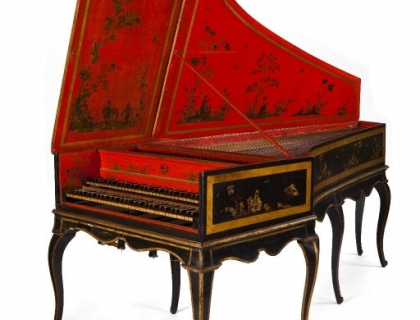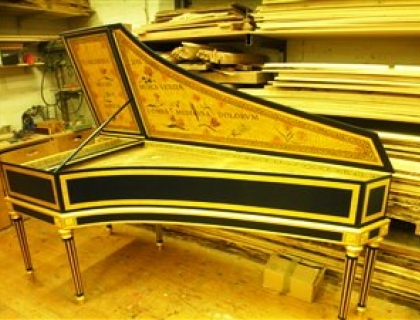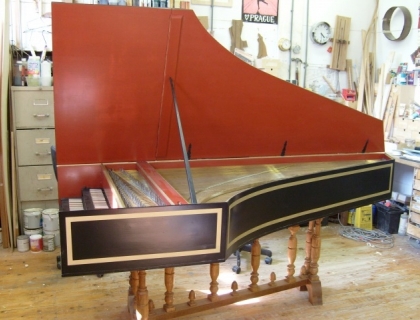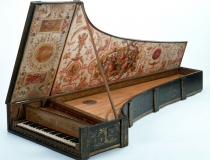French Harpsichords
The 1769 double manual as found in the Russell (University of Edinburgh) collection is one, if not the most copied individual instruments by harpsichord makers all over the world. This could be due to its light and accurate action and rich, distinctive sound. It is also suitable for a wide repertoire thanks to its large compass and particularly suitable for playing the music of the French masters, (Couperin, Rameau, Balbastre etc.). In building this instrument we leave the basic characteristics unaltered but have developed a new stringing schedule that gives the instrument a round light and sweet sound and avoids as much as possible those bright overtones that are (albeit erroniously) associated with French harpsichords. We also build other instruments after Taskin, the Goermans/Taskin 1764/1784 double ravalement for instance, one of the least copied but often re-realised instruments because of its unusual complexity as an altered instrument. It is one of the most beautiful instruments in existance.
See also...
|
If you would like an instrument after an Italian builder we will be more than happy to make one for you. We take the instruments of Giusti, Transuntino, Buffo, Grimaldi and Gregori as inspiration for our historically based realisations. |
Single Flemish Copy
Only one of the three harpsichords presented here can be considered a copy and that is the 1679 Ionnes Couchet at the Smithsonian Institute in Washington. The other two instruments are our own ravalaement of the same 1679 Couchet and of the double 1638. ... |




